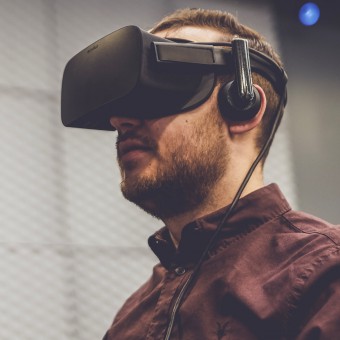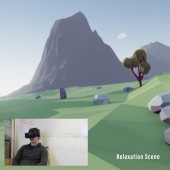VRbal VR app by Yuka Fukuoka |
Home > Winners > #81711 |
 |
|
||||
| DESIGN DETAILS | |||||
| DESIGN NAME: VRbal PRIMARY FUNCTION: VR app INSPIRATION: Currently, there is no effective way for individuals with social anxiety to practice coping techniques for an upcoming anxiety inducing event in a realistic environment. The most common method for practicing for a job interview or a presentation is by role-playing with a relative, friend, or therapist. Through the use of our virtual reality and artificial intelligence hybrid solution, the user can practice for an upcoming social event in the most realistic and personalized way possible. UNIQUE PROPERTIES / PROJECT DESCRIPTION: This project aims to replace the currently outdated practice of Applied Behavioral Analysis. Also, this project acts as an example of the level of high precision and realism that a customizable VR experience could have in the future. 1% of the total population are stutterers and many adult stutterers suffer from secondary issues such as depression and social anxiety disorders. Therefore, this application has the potential to solve many of the issues which burden many people all over the world. OPERATION / FLOW / INTERACTION: At the moment, there are countless virtual reality applications that provide the user with a meditation/relaxatio PROJECT DURATION AND LOCATION: The project started in December 2017 in New York and finished in March 2018 in New York, and was exhibited at the Games for Change Festival. FITS BEST INTO CATEGORY: Social Design |
PRODUCTION / REALIZATION TECHNOLOGY: Vrbal is a smart VR experience that uses machine learning to help the user prepare for a specific anxiety inducing event of their choice. By creating step-by-step daily tasks, Vrbal gradually exposes the user to the situation. We used C#, JavaScript, JSON, Oculus Rift, Unity 3D and IBM Watson AI. SPECIFICATIONS / TECHNICAL PROPERTIES: Product Dimensions: 3.9 x 3.9 x 3.9 inches; 8.09 pounds TAGS: VR, AR, XR, Social Impact Design, Stuttering, Speech Impediment, Disability RESEARCH ABSTRACT: We conducted a total of three user testing session and tested our prototype with members from the National Stuttering Association. We implemented methods such as unstructured interviews, A/B testing, and the Think-Aloud Protocol to gather a combination of quantitative and qualitative data on the effectiveness of Vrbal. We also used our test results to shape the design of Vrbal. In other words, our design process could be viewed as a collaborative experience between our team and our target users. CHALLENGE: I had never improved the quality of my ideas while actually doing test runs on users, just acting only on the first idea that comes to mind, never researched end users when I worked in the company. However, this time, while doing research, I also did ideations and execution together with the users. My most significant lesson was that I should never work on a project just by my ego. By answering the needs of the users, I can design solutions specifically catered to the root of their problems. ADDED DATE: 2019-02-28 18:18:00 TEAM MEMBERS (6) : 1. Yuka Fukuoka, 2. Olivia Maria Cabello Gorchs, 3. Ray LC (Luo), 4. Duyen Luu Hai, 5. Jullia Suhyoung Lim and IMAGE CREDITS: Yuka Fukuoka, 2018. |
||||
| Visit the following page to learn more: https://yukaportfolio.com/ | |||||
| AWARD DETAILS | |
 |
Vrbal Vr App by Yuka Fukuoka is Winner in Social Design Category, 2018 - 2019.· Press Members: Login or Register to request an exclusive interview with Yuka Fukuoka. · Click here to register inorder to view the profile and other works by Yuka Fukuoka. |
| SOCIAL |
| + Add to Likes / Favorites | Send to My Email | Comment | Testimonials | View Press-Release | Press Kit |







